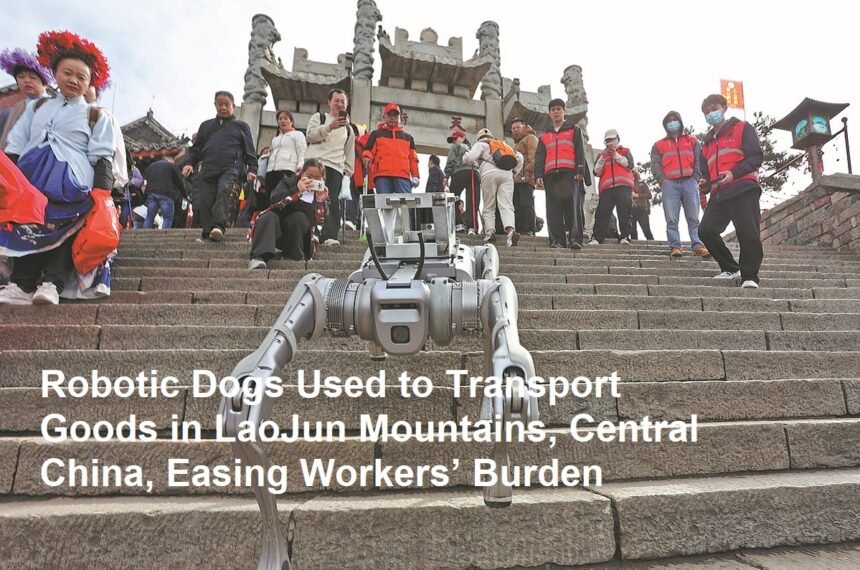In the rugged and challenging terrain of the LaoJun Mountains in Central China, innovative technology is transforming the way goods are transported. Robotic dogs—four-legged autonomous machines designed to carry loads—are being deployed to assist workers by transporting supplies and equipment across difficult mountain paths. This development is helping to reduce the physical strain on laborers and improve efficiency in remote areas.
Challenging Terrain and Traditional Transport Difficulties
The LaoJun Mountains are known for their steep slopes, narrow trails, and unpredictable weather conditions, making transportation of goods a difficult and often dangerous task. Traditionally, workers and porters have had to carry heavy loads on foot, which is physically demanding and time-consuming. Vehicles are often unable to access these remote paths due to the lack of roads and the rough landscape.
Introduction of Robotic Dogs
To address these challenges, local authorities and technology companies have introduced robotic dogs equipped with advanced sensors, AI navigation systems, and robust mechanical designs. These robots can autonomously navigate uneven terrain, avoid obstacles, and carry loads ranging from tools and food supplies to construction materials.
The robotic dogs are designed to mimic the agility and stability of real animals, allowing them to traverse rocky and slippery paths safely. Their ability to operate continuously without fatigue makes them ideal for supporting workers in remote mountain areas.
Benefits for Workers and Operations
The deployment of robotic dogs has brought several benefits:
- Reduced Physical Strain: Workers no longer need to carry heavy loads over long distances, decreasing the risk of injury and exhaustion.
- Increased Efficiency: The robots can transport goods faster and more reliably, speeding up construction, maintenance, and supply operations.
- Safety Improvements: By taking on the most physically demanding tasks, robotic dogs help reduce accidents related to manual carrying in hazardous terrain.
- Environmental Impact: Using robotic transport reduces the need for motorized vehicles, minimizing environmental disturbance in the fragile mountain ecosystem.
Technological Features
These robotic dogs are equipped with:
- AI Navigation: Advanced algorithms allow them to map routes, detect obstacles, and adapt to changing terrain conditions.
- Load Capacity: Designed to carry significant weight relative to their size, enabling them to transport various types of cargo.
- Durability: Built to withstand harsh weather, including rain, mud, and temperature fluctuations common in mountainous regions.
- Remote Monitoring: Operators can track and control the robots remotely, ensuring safe and efficient operation.
Future Prospects
The success of robotic dogs in the LaoJun Mountains is encouraging further adoption of robotic and AI technologies in other remote and difficult-to-access areas across China and beyond. These innovations have the potential to revolutionize logistics, disaster relief, and infrastructure development in challenging environments.
In summary, the use of robotic dogs to transport goods in the mountainous LaoJun region of Central China represents a significant technological advancement that eases the physical burden on workers, enhances operational efficiency, and improves safety in difficult terrain. This innovative approach showcases how robotics can support human labor in some of the world’s most challenging environments.









